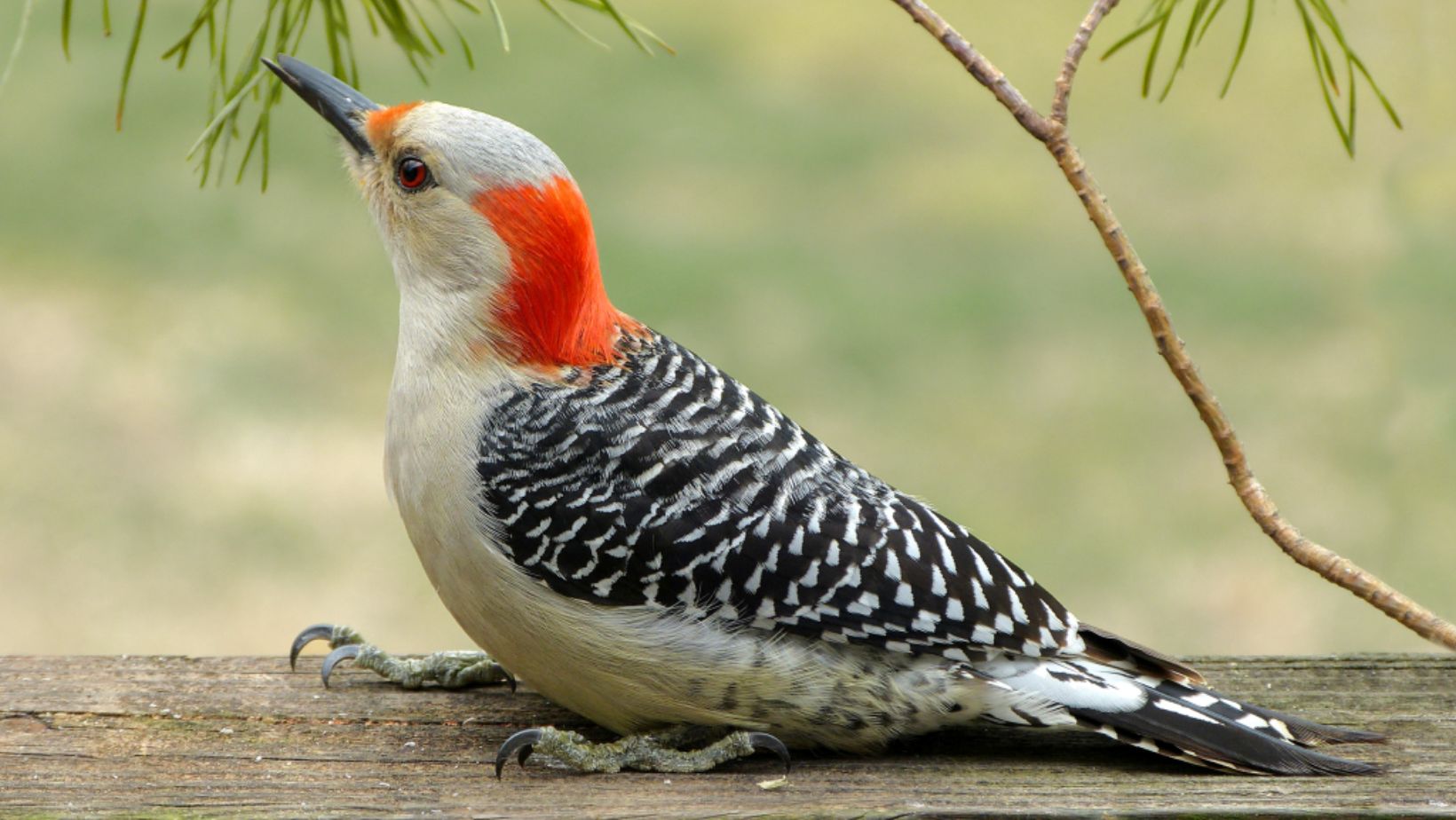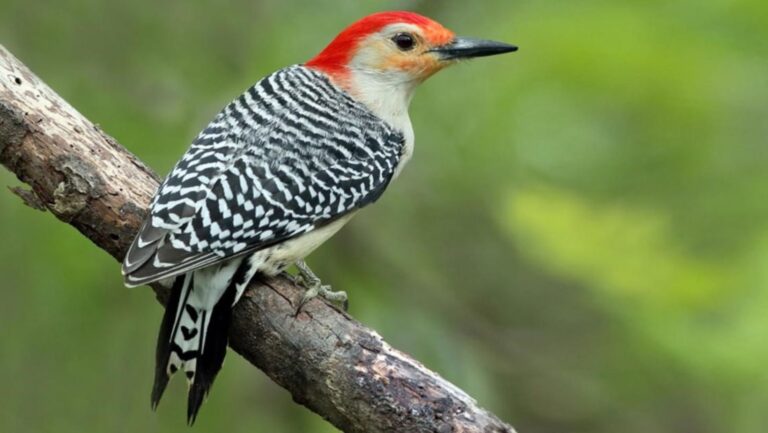Last Updated on November 20, 2024 by Nala Thorpe
Red bellied woodpecker is a beautiful, striking forest bird commonly seen in the North American Subregion. At one point, the red coloration of this bird is on the underparts, but in most cases, it may be obscure and blend so well with the surroundings that what one sees is the Red Cap and Nape.

Overview Of The Red-Bellied Woodpecker
It is a medium-sized bird that is preferable in the eastern region of the United States. It is often confused with the red-headed woodpecker, another bird with an almost similar look. While the species does feature a slight red shading on its underparts, it’s perhaps most famed for the red on the head: males, in particular, feature a bright red crown and nape. Females also show red plumes, but this is limited to the nape, thus having merit for visual distinction from the males.
Physical Characteristics And Identification
Red bellied woodpecker is about 9 to 10 inches long and has a wingspan of 13 to 17 inches. Only its back and wings show horizontal black and white stripes running across the width of the wings, commonly called “ladder-backed.” This pattern acts like camouflage to blend with the trees and vegetation. The only noticeable coloration is a very light pinkish-red on the lower belly, almost invisible at a distance.
Key Identifiers
- Color: Mainly black and white, the back half, and red on the head.
- Size: Larger than a sparrow and smaller than a crow.
- Shape: Large, powerful beak, big, strong-looking neck, and sturdy body.
Habitat And Range
The red bellied woodpecker is widespread across the eastern region of the United States, extending to the Great Plains, more on the Atlantic slope, and as far north as southern Canada. It prefers deciduous forests but is also found in mixed coniferous and deciduous forests, suburbs, and parks. It has now spread its territory and can be found in the urban and rural zones.
Habitat Preferences
- Deciduous forests
- Mixed woodlands
- Suburban and urban parks
- Riverbanks and swampy areas
Diet And Feeding Behavior
These woodpeckers are chicks eating both vegetable and animal-based products. They feed on insects, seeds, fruits, and nuts, among other food types that are available to them. Their food preference depends mainly on what is available. They take a more significant chunk of insects in summer than winter, while they feed on nuts and seeds in summer.

Common Foods
- Beetles, ants, and other insects
- Acorns, pine nuts, and seeds
- Wild fruits and berries
- Occasionally, sap and tree buds
Unique Foraging Techniques
Another interesting behavior of this bird is its manner of storing food. These birds coordinate their tiny legs to place seeds, acorns, and other small foods in crevices in tree bark. They also grab flying insects, a behavior known as ‘hawking,’ and often feed at backyard bird tables, especially during winter.
Mating And Reproduction
It identified the breeding season of this species as starting in April and ending in early summer. Females are insecure and depend on males, who use drums on trees and walls and loud calls to attract them. It is agreed that they set about felling a nest cavity in a dead or decaying tree trunk once a pair is formed.
Reproductive Facts
- Clutch Size: Typically, 4-5 eggs
- Incubation Period: About 12-14 days
- Fledging Time: The young birds also fledge at about 24-27 days after hatching.
Communication And Vocalizations
These woodpeckers have unique sounds, a shrill, sharp, harsh, and loud sound; it may be a metallic churr or a rapid kwirr. These are used among themselves, especially during breeding periods, to convey some messages to one another.
Besides vocalizations, they use call notes or alarm calls and transmit information through drumming – a fast or percussion-like sound made by beating a surface. This percussive activity thus plays the role of a signal of territory and as a way of calling potential consorts.
Threats And Conservation Status
Today, the red bellied woodpecker has been classified on the IUCN Red List of threatened species as Least Concern. This can be attributed to the highly flexible environment, below regional and global competition levels, and the population enjoys a relatively stable growth rate.
However, their population is vulnerable to habitat destruction, urban development, and climate change on some species. Measures to save forests and ensure areas with green landscapes in urban centers can support healthy numbers of people.
How To Attract Them To Your Yard
Providing food and proper nesting grounds goes a long way for people interested in bird watching or attracting woodpeckers. This means you only need to offer fat such as suet, seeds such as sunflower seeds, and nuts such as peanuts on your feeders. Further, sometimes, it becomes safe to leave dead trees or snags in the yard to offer them natural nesting chances.
Tips to Attract Them
- Spread feeders with suet, sunflower seeds, peanuts, etc.
- You can plant native berry-producing trees or shrubs.
- Avoid taking down trees all year round, mainly because they offer nesting grounds.
- Nests Box should be installed so that the woodpeckers can live comfortably.
Conclusion
The red bellied woodpecker is one of the brightest and most colorful bird species, characteristic of pleasant singing or calling and incredible versatility. Because this bird is a predator of insects and has a positive involvement as a seed disperser, this woodpecker adds value to the ecosystem. It becomes easier to appreciate the vast and diverse world that God has blessed humanity with, and we embrace the efforts to preserve it. Whether in a small, serene forest or a large, active backyard, it will defy to provide anyone with the mind to view it with anything short of an unforgettable experience.




